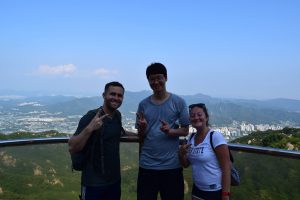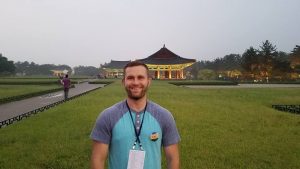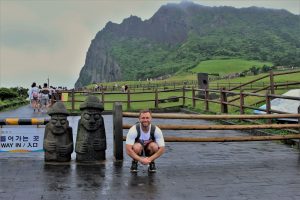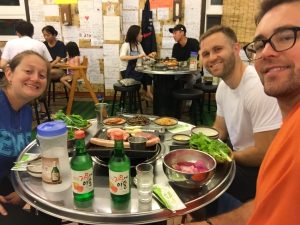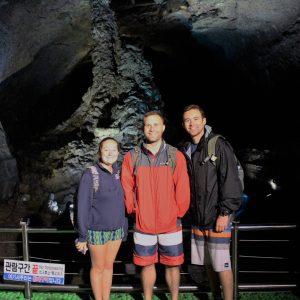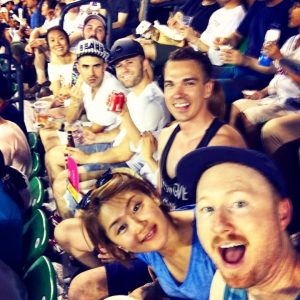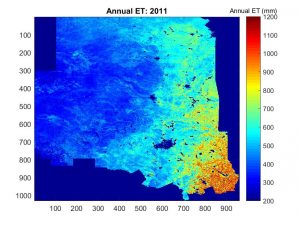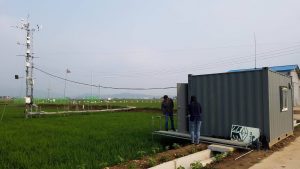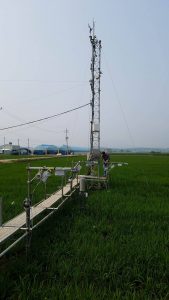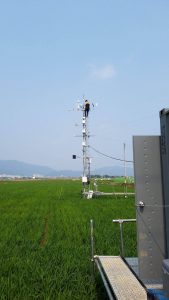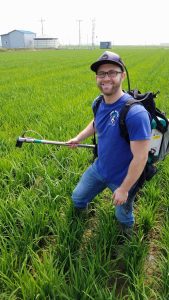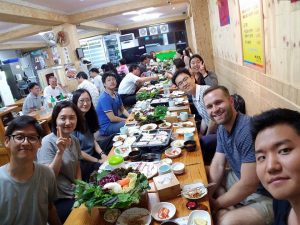So far I’ve gotten to eat some great food, experience some cool places, and meet new friends.
If you know me, you know that I love to eat food. Korean style food is much different than I expected. I envisioned a bunch of dishes covered in many different sauces, similar to what you get when you go to a Chinese restaurant. However, there really is only one type of sauce that they like to use for their food, and that is spicy sauce. They usually use the sauce to dip their food in or cover their noodles. One thing that did not surprise me was how popular kimchi is. Kimchi is the staple food of Korea. It’s basically just fermented cabbage with spicy sauce. Expect this, along with pickled radishes, and a couple of other different foods as side dishes at any Korean restaurant. The nice thing about Korean restaurants is that you can get unlimited amounts of these little side dishes. And usually a normal plate of food will cost you around $5, and you don’t tip so the service is pretty relaxed, but I think it’s better that way. My favorite Korean meal would have to be Korean BBQ. It’s different than American BBQ. Normally you sit down at a table with a grill in front of you and you cook your own pork or beef. Koreans like their food hot and right off the grill. Once the meat is done you place 1 piece on a leaf of lettuce and then add some toppings like onions, garlic, kimchi, sauce, and then you wrap the whole thing up and shove it in your mouth in one bite. And with every meal Soju (like Korean vodka) and Mekju (beer) are served. I like to pour the Soju and Mekju together to make a ‘Somek’. After the meal they serve noodles in an icy broth. It’s really good! Korea is also famous for their street food so after a night out it’s nice to stop by a vendor and get some street food.
I’ve done a lot of sight-seeing since I’ve been in Korea. I’ve experienced nightlife in Gangnam, Itaewon, and Hongdae districts. Noraebang is Korean Karaoke that can get very intense and loud, but still a lot of fun. I took the bullet train to the southeastern part of Korea to visit very traditional Korean burial grounds and Buddhist temples. I also went to a Korean baseball game. It is much different than American baseball in terms of the fans. They have cheers, noise makers, and go absolutely nuts every time their team scores. But one of my favorite trips was to Jeju Island, South Korea. They call it the Hawaii of Korea. It’s a very big volcanic island to the south of the peninsula. We experienced underground caves that were carved out by lava flows, very nice beaches, incredible hiking, waterfalls, and Jeju’s famous black pork. This weekend I plan on going to Busan, the second largest city in Korea. It is a beach city on the southeastern coast. Luckily I’ve made some lifelong friends on the way that are willing to go on crazy adventures with me. I’m lucky to have such fun people in my life, and I look forward to continuing relationships with them when I go back to the states.
